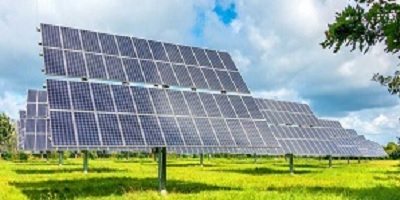Inequality hampers countries’ potential to develop green innovation
Inequality negatively affects countries’ capacity to develop green innovation. At the same time, high income countries are less affected relative to middle income ones – and this could be the source of increased cross-country divergences. These are two of the main conclusions of a study coauthored by researchers at INGENIO, a mixed research institute of the Council for Scientific Research (CSIC) and the Polytechnic University of Valencia (UPV). The paper is published in the journal Structural Change and Economic Dynamics.
According to the authors, most research on green technology focuses on the factors that facilitate their development, while neglecting local socioeconomic barriers that may impede or slow down the capacity of countries or regions to innovate in this domain.
The paper analyzes the relationship between green innovation capacity and income inequality in a panel of 57 countries during the period 1970-2010. “We rely on an algorithm that allows us to differentiate countries not only by the volume of green patents, but also by the composition of their patent portfolios. This generates a ranking that differs from the one based on the sum of all patents and that, instead, captures countries’ potential to diversify their range of innovative activities”, says Davide Consoli, CSIC researcher at INGENIO.
From their analysis, authors observe how internal inequalities are directly related to lower capacity for green innovation. “Put simply, it limits their ability to develop more diverse and higher-value competences for green technology” adds François Perruchas, also a CSIC researcher at INGENIO.
On the other hand, the team of researchers points out that countries most exposed to climate change tend to also be those with less resources to deal with its destructive effects. The study concludes that inequality affects the innovation capacity of medium-level countries more than high-income countries. And, more importantly, declining inequality can open up green development opportunities for countries that are catching up.
"The main implication is that policies to support the development of green technology should encourage capacity building, not only by stimulating investment and new business opportunities, but also by removing existing socioeconomic barriers within each country," adds Consoli. Other coauthors are based at the European Commission Joint Research Center (JRC-Seville), the Enrico Fermi Center in Rome (Italy), the University of London, the University of Ferrara (Italy) and SEEDS (Sustainability, Environmental Economics and Dynamics Studies) from Italy.
Reference
Lorenzo Napolitano, Angelica Sbardella, Davide Consoli, Nicolò Barbieri, François Perruchas . Green innovation and income inequality: A complex system analysis. Structural Change and Economic Dynamics. Volume 63, 2022. https://doi.org/10.1016/j.strueco.2022.09.007




